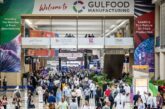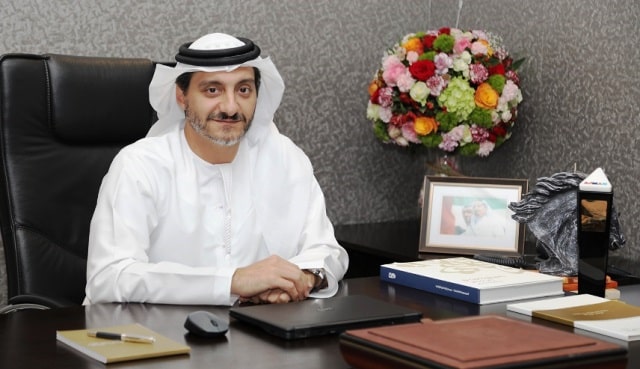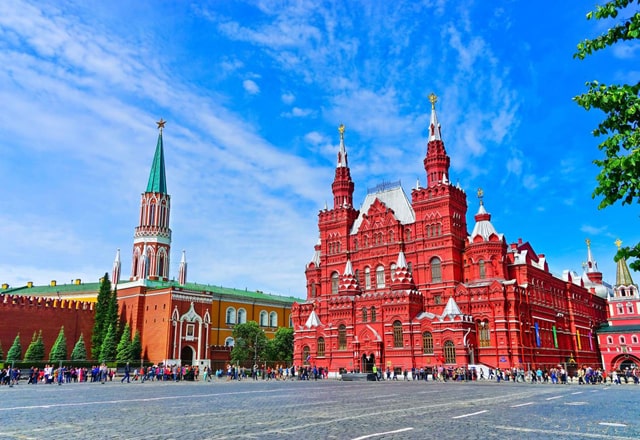
Beans for Business – The Global Coffee Culture
Almasalla, ATP News- As a world-class investment platform and international business facilitator, Gulfood 2015 – the landmark 20th edition of the world s largest annual food and hospitality show – adds impetus to Dubai’s vision to become the premier global hub for foodstuff commodities trade, including coffee.
With coffee consumption across the Middle East continuing its upward trend, the UAE is gaining in popularity as one of the region’s major re-export hubs for coffee trading. Gulfood 2015, taking place 8 – 12 February 2015 at Dubai World Trade Centre (DWTC), is set to attract local, regional and international coffee traders exploring opportunities to export, import and re-export coffee across the MENA region and beyond.
History of Coffee
Enjoyed by the vast majority of the world’s population, a degree of mysticism surrounds the origins of coffee. Stories of legend, anthropology, archaeology and even theology trace coffee’s roots back to the Horn of Africa and Ethiopia, Sudan and Kenya – although several Middle East nations play key roles in the beverage’s spread across the globe.
History shows that eating the fruit of the plant – known as coffee cherries or coffee berries – originated in the present day Sudan. Migration took the practice to Yemen and Arabia, with archaeological evidence confirming that by the end of the 15th century the ritual of coffee drinking was common among the Sufis of Yemen.

Thus, the Middle East is where coffee drinking – as we know it today – truly began. Ever since the first cup of brewed coffee was enjoyed more than 600 years ago, coffee consumption has been at the heart of Middle Eastern culture and is still used as the standard welcome at home and in hotels as a symbol of hospitality.
The global proliferation of coffee is owed largely to the Dutch, who, having traded the product along Gulf of Eden trading posts in the early 17th century, went on to set up coffee plantations in India and Indonesia. After becoming the primary suppliers of coffee to Europe, the Dutch can also be credited for the spreading of the coffee plant to Central and South America.
Coffee, World’s Most Widely Traded Agricultural Commodity
Over the past 50 years, the world coffee market has undergone a considerable transformation. Consumption has increased at an annual growth rate of 1.9 percent – rising from 57.9 million bags (1 bag = 60kg) in 1964 to 142 million bags in 2011. As one of the world’s most widely traded commodities, coffee is second only to oil in trade value.
According to the International Coffee Organisation (ICO), the total value of the industry in 2012 was estimated at USD 173.4 billion, with global production in 2012 and 2013 measured at 145 and 145.2 million bags, respectively. In 2014, the United States Department of Agriculture estimated global production to be 149.8 million bags. With some 70 countries producing coffee, major global exporters include Brazil, Vietnam, Indonesia, Columbia, Ethiopia, India and Mexico, all Exporting Members of the ICO, which is responsible for 97 per cent of the world’s output.

Though the European Union, the United States and Japan have traditionally been the largest importers of coffee beans, recent years have seen a shift in demand with developed economies reaching saturation point and coffee-producing nations and emerging markets witnessing increases in demand and consumption. With improved economic and social development, rising income levels, higher living standards, younger and growing populations, and acquired new tastes, these markets are expected to significantly contribute to the growth in world consumption in coming years.
The Middle East’s – and the UAE’s – Booming Coffee Industry
 Gaining popularity with coffee traders wishing to re-export their products to emerging markets in the MENA region, South Asia and Africa, the UAE is ideally positioned to serve as a major re-export hub supplying and servicing other territories because of its strategic location, world-class logistics infrastructure and obvious tax free benefits. Between the period 2005 – 2008, the UAE was one of the world’s five major coffee re-exporting nations (UAE Ministry of Foreign Trade) and, as per the latest figures released by Dubai Customs and Dubai Multi Commodities Centre (DMCC), Dubai’s coffee exports increased at an average annual rate of 57 per cent – or from USD 5.9 million to USD 22.4 million – between 2010 – 2013. For the same time period, Dubai’s coffee imports increased at an average annual rate of 72 per cent, or from USD 29.7 million in 2010 to USD 131.1 million in 2013.
Gaining popularity with coffee traders wishing to re-export their products to emerging markets in the MENA region, South Asia and Africa, the UAE is ideally positioned to serve as a major re-export hub supplying and servicing other territories because of its strategic location, world-class logistics infrastructure and obvious tax free benefits. Between the period 2005 – 2008, the UAE was one of the world’s five major coffee re-exporting nations (UAE Ministry of Foreign Trade) and, as per the latest figures released by Dubai Customs and Dubai Multi Commodities Centre (DMCC), Dubai’s coffee exports increased at an average annual rate of 57 per cent – or from USD 5.9 million to USD 22.4 million – between 2010 – 2013. For the same time period, Dubai’s coffee imports increased at an average annual rate of 72 per cent, or from USD 29.7 million in 2010 to USD 131.1 million in 2013.
Furthermore, a 2013 report by Euromonitor International named the UAE as ‘the world’s fastest growing market’ and growth in total coffee volume sales at 80 per cent between 2009 and 2014, with average annual growth of 12 per cent. This growth comes despite more than 50 per cent of the UAE’s population hailing from East Asia and the Indian subcontinent – a consumer base that traditionally favours tea over coffee.

Indeed, rising coffee imports indicate that the UAE’s domestic market is also witnessing a boom in coffee consumption, particularly in the last few years. As the burgeoning coffee culture attracts younger generations, the focus has increased on independent cafes, ingredients that are sustainably sourced and luxury, rare, specialty and single origin coffees.
In addition to the opening of new cafes, and growth in the number of coffee trading, coffee roasting and coffee packaging companies in the region, there has also been an emergence of coffee events, festivals and barista competitions. Gulfood 2015, for example, features the Barista Bonanza for the second year. Supported by the Speciality Coffee Association of Europe (SCAE), this educational event delivers a series of 45-minute seminars to coffee enthusiasts and professionals keen on experiencing the Coffee Diploma System programme. From a second location at Gulfood, the event also provides visitors with a unique opportunity to acquaint themselves with a variety of brewing techniques performed by world-class baristas brewing live on the show-floor and offering tastings of specialty coffees from all over the world.
“Coffee is such an important part of our culture and it has such a deep-rooted history across the region,” said,” said Khalid Al Mulla, the Founder of Dubai’s Coffee Museum. “For centuries it has been used as the way to welcome your guests, whether in your home or at formal meetings. Go to any hotel in Dubai, and in most of them you will be welcomed with an Arabic coffee as this is a symbol of hospitality and way of bidding visitors welcome.”
Coffee Sector to Continue its Upward Trend
With global coffee consumption continuing its upward trend, the prospect of further coffee sector growth remains promising due to three key factors: increased demand in exporting countries such as Brazil, Indonesia, Ethiopia, Mexico, Philippines, India, Venezuela and Vietnam; popularity in emerging economies including the MENA region, South Asia and Africa; and the expansion of niche markets in traditional consuming countries such as the European Union, the United States and Japan.
Regionally, coffee consumption is also set to grow. The Arab-Brazilian Chamber of Commerce (ABCC) reported a 75 per cent increase in coffee bags shipped from Brazil to Arab countries from January to June of 2014 when compared with the corresponding period in 2013. With the coffee sector employing millions of people across the globe, the industry and its exports continue to be one of the prime contributors to exporting nations’ foreign exchange earnings, as well as constituting a considerable percentage of their tax income and domestic gross product.
 The biggest edition in the show’s history, Gulfood 2015 is expected to attract more than 80,000 visitors from 170 countries and 4,800 international exhibitors from 120 countries.
The biggest edition in the show’s history, Gulfood 2015 is expected to attract more than 80,000 visitors from 170 countries and 4,800 international exhibitors from 120 countries.








